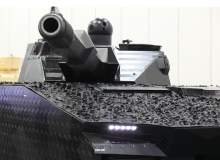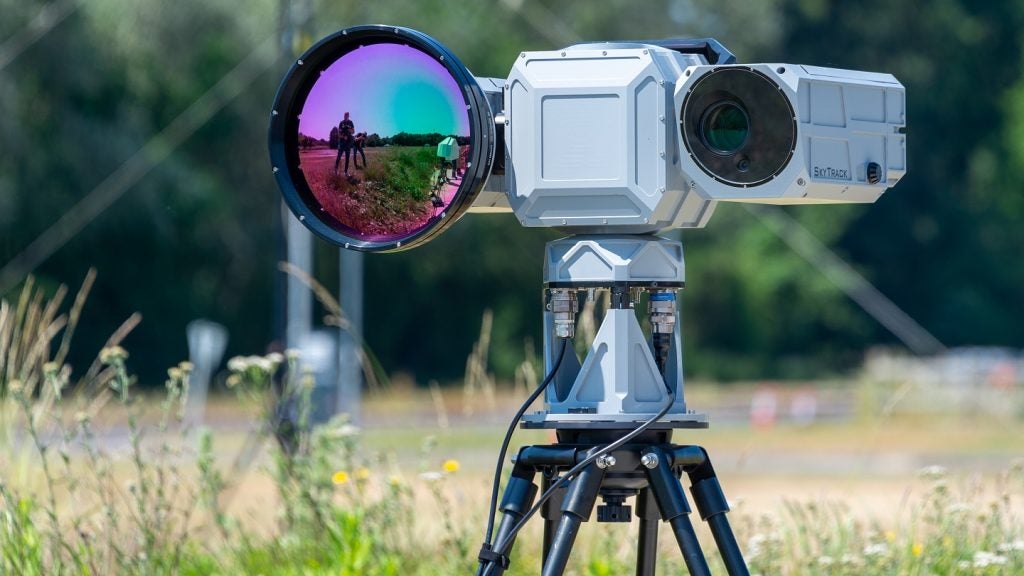
From Star Trek to science
Approaching an enemy without being detected has been one of the key goals of military innovation since the adoption of camouflage, first seen in the introduction of green uniforms as early as the Napoleonic wars.
But beyond mere camouflage, military commanders and scientists alike have been obsessed with the quest for technology which can make people and vehicles disappear entirely, an idea first popularised in science fiction with cloaking devices used on the spacecraft in Star Trek.
Practical breakthroughs have improved greatly on the original concept of camouflage in the visible spectrum, mainly by accommodating the detectors and sensors used in modern warfare.
As such, near invisibility has been achieved by masking or disguising the electromagnetic (ER) emissions produced by the target, or by confusing or jamming the sensing devices aimed at it.
But are we any closer to genuine invisibility? In recent years scientists have begun investigating the properties of metamaterials, which hold the potential to bend ER around the object, or emulate the effect of background ER passing through the cloaked object by projecting an image of it on the front. It is in these fields that reality has begun to take a step closer to the fantasy.
See Also:
BAE Systems’ invisibility cloak
BAE Systems’ latest offering, the Adaptiv ‘invisibility cloak’, follows the high-tech active camouflage model, concentrating on masking the infrared spectrum in a unique way. It also holds the potential to extend this ability into other parts of the electro-magnetic spectrum.
How well do you really know your competitors?
Access the most comprehensive Company Profiles on the market, powered by GlobalData. Save hours of research. Gain competitive edge.

Thank you!
Your download email will arrive shortly
Not ready to buy yet? Download a free sample
We are confident about the unique quality of our Company Profiles. However, we want you to make the most beneficial decision for your business, so we offer a free sample that you can download by submitting the below form
By GlobalDataUnveiled at the UK Defence and Security Equipment International (DSEi) exhibition, held in September 2011 in London, Adaptiv uses a series of hex-shaped computer-controlled semiconductor heat-sink tiles to hide or disguise the thermal image of military assets.
The patented Adaptiv technology uses cameras on-board the target, such as an armoured vehicle, to pick up the infra-red readings of the background scenery. The same background pattern heat signature is then projected onto a series of hexagonal ‘pixels’ mounted on the target that can change temperature very rapidly to match the surroundings.
As well as helping an object disappear into the background for an observer using an infrared sensor; it can also be used to mimic the infrared reading of a different vehicle, so a tank looks like a civilian car, for example. It can also be used to display identification tags in the invisible spectrum to friendly troops, reducing the risk of friendly fire.
Adaptiv was partly funded by the Swedish Defence Materiel Administration (FMV), who wanted the system to initially focus on the infrared spectrum. BAE Systems’ engineers now plan to combine the pixels with other technologies to provide camouflage in other parts of the EM spectrum.
BAE Systems trialled Adaptiv in mid-July 2011, demonstrating that it could make a BAE Systems CV90 armoured vehicle or other object effectively invisible when viewed in the infra-red spectrum.
BAE Systems claims Adaptiv improves over previous similar cloaking devices as the panels can be made strong enough to improve the vehicle’s armour, plus the system consumes much less electricity than its rivals, especially when the vehicle is at rest in ‘stealth recce’ mode and generator output is low. The pixels could also be easily sized up to conceal a warship or a building from distance, but in its current format would not be suitable for foot soldiers.
Metamaterials for modern warfare
Metamaterials are man-made materials with a microscopic structure which enables them to exhibit behaviour on the macro scale that cannot be found in natural materials.
Research into using metamaterials to render objects invisible has attracted military attention from its inception, but although it has been ongoing for a number of years, no practical applications have yet been delivered.
Back in 2008, the US Army Research Office and the National Science Foundation’s Nano-Scale Science and Engineering Centre funded research at the University of California aimed at developing materials that could make people and objects invisible by redirecting light and other EM radiation around them.
St Andrew’s University in the UK took this a step further towards a Harry Potter-style invisibility cloak by rendering metamaterial into a flexible film that could enwrap an object while bending light around it.
Research at Imperial College London, UK, envisages the ultimate aim of making individual soldiers undetectable, perhaps through applying a metamaterial-enhanced ‘sun cream’ that would bend light round them.
Flummoxing facial recognition technology
Until the cloaking sun cream becomes reality, US Special Operations Command (SOCOM) is working on keeping the identity of commandos secret as they carry out covert missions through a recent solicitation for technology to reduce a person’s ‘facial signature’.
SOCOM wants the solution to keep soldier identities secret in a variety of marine environments, all temperature and lighting conditions and in all weathers.
It should not impede current signature reduction countermeasures built into combat uniforms and equipment or hamper the ability to breath, see or hear.
With the initial aim of identifying novel materials, products and technologies that exhibit signature reduction capabilities for the face and head regions of the body, SOCOM intends to test the resulting signature reduction improvement by a Probability of Detection performance metric at rest and in motion.
Calming the wake
Underwater, invisibility from sonar is as important as that from EM radiation on land, and metamaterials could play as important a role as they do in bending or disrupting the visible and invisible spectrums.
Researchers at the University of Illinois have developed an acoustic cloak that makes underwater objects invisible to sonar and other ultrasound waves. The device controls sound waves by bending and twisting them around a specially-shaped space using a unique metamaterial.
The cloaking technology could also be used to help prevent cavitation, a term used to describe the formation and implosion of bubbles around fast-moving underwater objects.
Taking a different approach, researchers at Duke University in North Carolina, US, have developed a ‘wake cloak’ concept using metamaterials that could help future submarines glide through water so efficiently they would not leave a wake.
Developers Yaroslav Urzhumov and David Smith said the cloak would look like a ‘blade-covered hedgehog’. The concept takes the idea that a small object dragged through water – say a little finger – creates less drag that something bigger, such as an entire hand, so blades create minimal drag.
The proposed design would see a mesh of wires or blades mounted on the surface of the in concentric shells that guide the streams of water.
Thicker wires are used at the centre where more deflection is needed while thinner blades on the outside change the path of the water, making it move gently.
Micropumps would control the speed of the water in each layer, ensuring each stream moves near the same speed as its neighbours. This gradual change from the near stillness of the outer layer to the speed of the travelling object in the inner layer would prevent the water from dragging on the cloak or the object.
So far researchers have only tested their theory on a bullet-sized computerised model moving very slowly, but this could pave the way for micro-drones that could stealthily investigate an enemy submarine without being detected.
Cloaking the future
With the exception of BAE Systems’ ADAPTIV solution, most true cloaking systems are at a very early stage of development and may not be seen on the battlefield or at sea for a number of years. Although the effect will never be as dramatic as Star Trek’s vision of a star-ship shimmering into complete invisibility, any advance to reduce detection by the enemy by eye or sensor systems will offer a significant tactical advantage.







